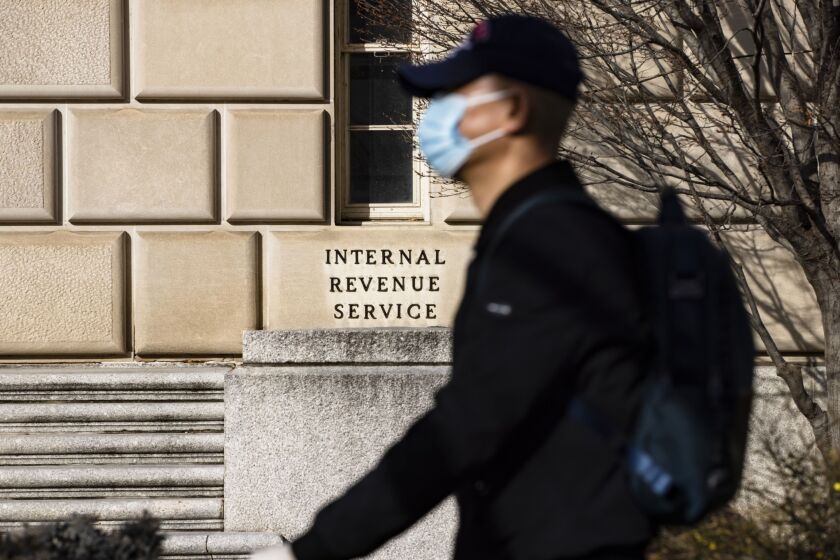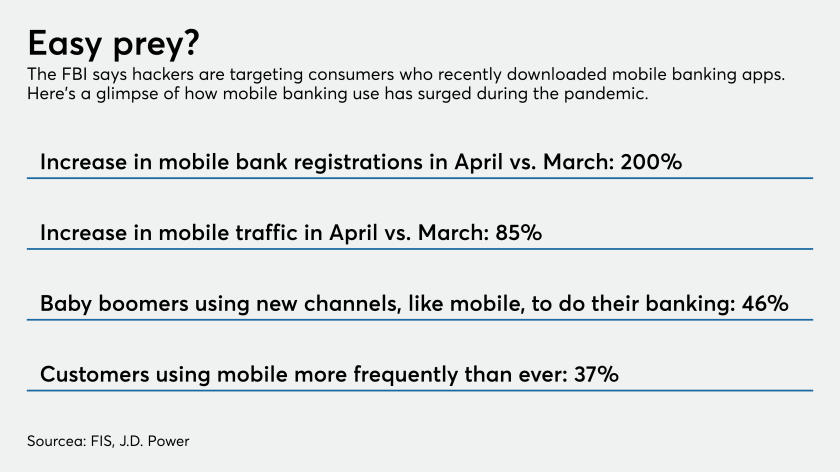The pandemic has created a digital divide of sorts among fintechs: Payments companies and challenger banks have risen to the challenge of increased demand, while online lenders and others have struggled because of disruptions to their businesses not unlike those at more traditional companies.

Much is uncertain: How long will the pandemic last, how will the economy hold up, how much will consumer behaviors continue shifting, and will people snap back to their old routines?
Venture capitalists predict the divide will keep growing. Some fintechs will die out, some will struggle, and some will thrive during the rest of 2020.
Some will fold
Jillian Williams, investment principal at Anthemis, says that venture capital funding of fintechs has been a bubble.
”Within the venture space, there's a ton of money — more than there's ever been,” she said. “And so you're seeing a lot higher evaluations, a lot more money going into companies. And you're seeing that not work out for many people. There's probably going to be some sort of shakeout, especially when you have multiple companies in the same exact sector.”
She cites challenger banks as an example.
The Internal Revenue Service will allow businesses that got their Paycheck Protection Program loans forgiven to write off expenses paid for with that money, shifting policy after Congress passed new legislation last month.
The Internal Revenue Service and the Treasury Department released guidance on claiming deductions for expenses associated with Paycheck Protection Program loans that have been forgiven.
The Internal Revenue Service is once again depositing the latest round of Economic Impact Payments in the wrong bank accounts in a replay of problems experienced last year by many taxpayers.
“If I am meeting just another neobank that is going after millennial-type consumers, am I excited at that proposition? No,” she said. “You have so many neobanks, and now it's getting to the point where they're trying to create very niche ones as well. There's one called Redneck Bank. Once you get to that point, it's kind of saturated.”
Chime and Current have had some of their best quarters during the pandemic, she said. At the same time, large banks have had high numbers of account openings, too. Chime reported in February that it was up to 8 million users. Current surpassed 1 million users in June.
“A lot of that positive volume is driven by the stimulus checks and unemployment pay, along with spending being down,” Williams said.
If Congress does not approve a second round of stimulus checks, August could look very different, she warned.
“Reality will set in for what could happen to our economy if we continue this partial shutdown,” she said.
“You might say there's been a bubble,” she said. “There are hundreds of fintech companies that I expect will run out of money in the next year or so.”
Tilman Ehrbeck, managing partner at Flourish Venture Capital, sees what he calls a “no-touch economy” emerging out of the pandemic, which will be rough on some fintechs.
For instance, Ehrbeck considered and didn’t invest in a B-to-B fintech that was developing an app for member and payment management for gyms.
“They were doing really, really well,” Ehrbeck said. “I'm sure they are struggling now by contrast.”
Some will keep struggling
Online lenders like LendingClub, SoFi and OnDeck Capital have been struggling during the pandemic.
“The balance sheet lenders that have some skin in the game will have to get through this wave of losses,” said Jay Reinneman, general partner at Propel Venture Partners. “If they're not well capitalized and can't pivot on their underwriting, those are going to be the ones that aren't going to work.”
Online lenders that are well capitalized and have rejiggered their underwriting models should be OK, he said.
While they are not dramatically opposed, Jelena McWilliams and Brian Brooks have articulated their own ideas on postal banking and the use of artificial intelligence in lending.
Mobile banking use has swelled since the pandemic hit, and law enforcement officials expect hackers to target the credentials of digital novices. The FBI stressed the importance of two-factor authentication and ensuring consumers know how to spot fake apps that carry malware.
Lenders are cautioning not only that second-quarter provisions might exceed the spike seen earlier this year, but also that credit costs could be elevated into 2021 if the economic slowdown drags on or fears of a second coronavirus wave are borne out.
There’s also opportunity for fintechs in the huge surge of online purchasing while banks have cut back credit and consumers are looking for retailers to provide credit, he said.
“Now retailers are in a bind because they’ve got to find more alternative lending solutions,” Reinneman said.
Fintechs that make unsecured personal loans were already struggling before the pandemic, Ehrbeck said.
“Now they're obviously in trouble, and that's for several reasons,” he said. “In the consumer payment hierarchy, the one-off, unsecured, personal loan is lowest. People would first try to make sure they pay their mortgage people and then their credit card, because they need to maintain an online payment mechanism. And they make sure that they pay the car loan so that they can go to work.”
Williams expects online lenders to continue to struggle given economic uncertainty.
“A lot of banks set aside billions in loan-loss provisions in the second quarter,” she said. “There's definitely still a fear of what's going to happen when people can’t pay their mortgages or their rent” and forbearance measures run out.
Small-business lending will also be tough for a while, Williams predicted.
Some will thrive
Fintechs that have adapted to the no-touch economy should do well, Ehrbeck said.
“We are working from home,” he noted. “We try to avoid excessive grocery shopping and rather get it delivered. We have got more Netflix and other subscriptions. We do Zoom. Our lives have moved online, and there's a big financial component to that.”
Companies that process online payments, like PayPal and Stripe, are the most obvious example. They have been benefiting from the migration of germ-laden cash to digital money.
A fintech that helps grocery stores handle online logistics and curbside delivery should also do well, Ehrbeck said.
Some fintechs that work with banks will benefit from the banks’ need to become more digitally savvy, Williams said.
“A lot of [the banks] during the pandemic have realized how far behind they were and started to improve somewhat in terms of their digital offerings, but I think there's definitely going to be more of a push behind that,” she said.
Technologies that help banks do things remotely, like opening accounts, have been a huge opportunity, she said. Technology that enables a better customer experience, for businesses or consumers, should also be in demand. Tech vendors’ sales cycles with potential bank clients that once were 18 months are now nine months, she estimated.
Reinneman has also observed banks both large and small ruing their lack of remote capabilities.
“The traditional banks are now recognizing they haven’t done the digital transformation they were supposed to,” he said. “And now that they’ve had to shut branches temporarily, they wish they had done it sooner. That may be a boon to some fintechs. There should be more appetite from the large banks to bring more vendor solutions that are going to help them be better at acquiring and servicing their customers across every line of their business.”
Customer service, call center, virtual assistant and work-from-home technology all fit under this umbrella, he said, including technology that helps call center reps work more efficiently.
The peer-to-peer payments space should also do well, Williams said, especially as more people, including Gen Z, are sending money to donate to coronavirus relief efforts and Black Lives Matter campaigns.
Some venture capitalists see a rise in “embedded finance,” in which a banking product, such as a loan or a payment, is part of a nonbank activity or platform like online shopping. The e-commerce provider Shopify is an example.
“A lot of these platforms, like Shopify, are in a better position to underwrite loans to their customers, because they can see how many transactions they have,” Williams said.
Another example is embedded insurance.
“In my kids’ college loans, embedded in the payment mechanism is an offer for tuition coverage in case something happens,” Ehrbeck said. “It's not cheap, but I'm doing it, because I'd say there's a real risk. And it's very easy. I just hit that button.”










